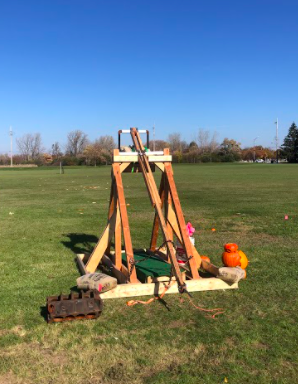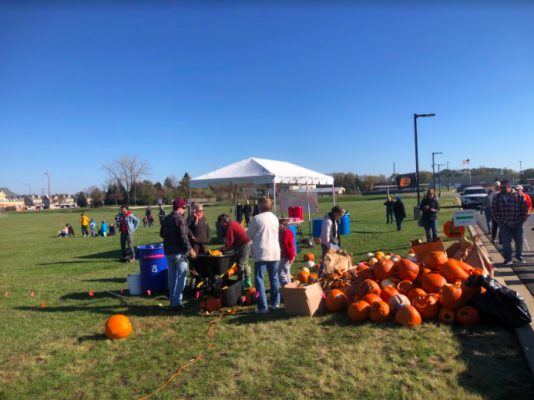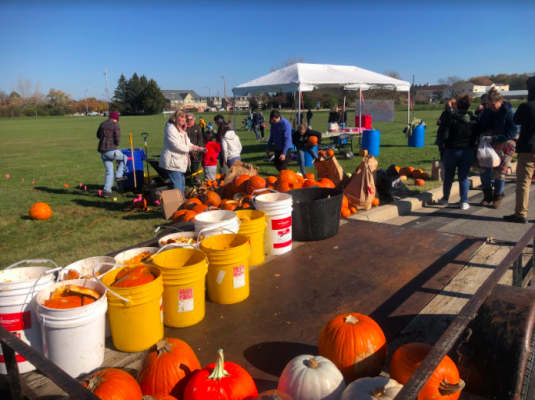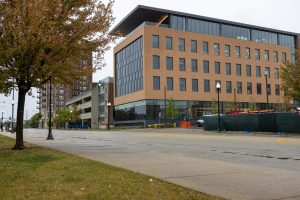Engineering and Environmental clubs team up for eco-friendly pumpkin launch
November 16, 2021
On Saturday, November 6, CLC’s Engineering and Environmental clubs partnered for a pumpkin trebuchet launch to have some fall fun while also benefiting the environment. There were donuts, coffee, and great music while families and students gathered with their Halloween pumpkins to participate in the smashing festivities.
Carlos Catalan, president of the Engineering Club at CLC, spoke about the engineering component of the event.

Trebuchet built by the Engineering Club
“Overall, the Engineering Club has been working for three to four weeks. The trebuchet had already been pre-built, but we did have to reinforce it, and we did have to make sure it was structurally sound before we got out here again”, he said.
The Engineering and Environmental clubs had planned on running this event in 2019, but it had to be pushed to this fall because of the pandemic.
“We’ve essentially been reassembling it and rebuilding it because it’s been over a year because of Covid. It was in rough shape, so it did need some restructuring”, Catalan continued.
The trebuchet used at the event was built by Engineering Club members in 2019, who “gathered materials and built it from scratch,” Catalan said. “They built it, and then we just refurbished it this year.”
With the trebuchet assembled and ready to go, the Environmental Club began its part in the project. Shannon Bassi, the lead organizer of the event on the Environmental Club’s side, spoke about the purpose of launching the pumpkins.
“Typically, once pumpkins are used for Halloween, they would go into a landfill. Food waste goes into the landfill and decomposes without air anaerobically, and when it does, it creates a really powerful greenhouse gas known as methane. So we’re trying to keep that from happening”, she said.

Pumpkins being collected by members of the Environmental Club
When food waste is sent to landfills, it is covered and decomposes within an enclosed space, allowing for methane gas. Then, once the waste is disturbed, the gas is released into the atmosphere, contributing to air pollution. Launching the pumpkins helps the Environmental Club keep them out of the landfill and makes an entertaining and educational event out of it. But the work doesn’t stop there because the club does even more with the pumpkin remains.
“We take these pumpkins back to the campus farm, and they become part of the soil, adding natural organic nutrients, so the farm doesn’t have to use fertilizer,” said Bassi.
Many students in horticultural programs benefit from this event because it provides free materials for them to learn hands-on about composting and farming.

Smashed pumpkins ready for transport back to the campus farm
Students interested in getting involved in projects like this at CLC for the benefit of the environment are always welcome in the Environmental Club.
“[Students] can become part of the Sustainability Council, which is a group of people who are concerned about the environment and sustainability,” Bassi said. “We have a pretty extensive website about all the things that we’re doing sustainability-related here. We’re rated one of the top community colleges in the country for sustainability, and that’s amazing.”






